How to Help Your Pet in an Emergency
It can be stressful when a pet emergency occurs, and this can lead us to panic. But the most important thing is to try your best to stay calm and assess the situation to help out your furry friend. We at 5-Minute Crafts have a few ways to help you be prepared and help your pet.
❗️Important: This article is for information purposes only. Always contact your vet in case of emergency or if your pet has any health problems.
1. How to check vitals on dogs and cats
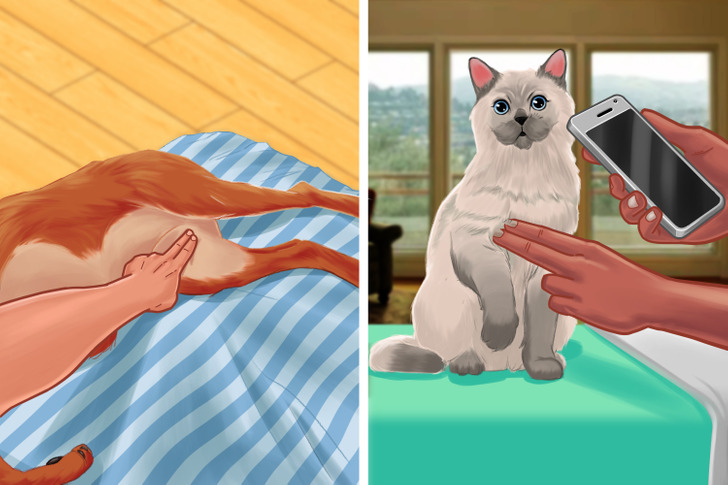
The first thing to remember when checking a pet’s vitals is to know the normal parameters. This will let you help assess your pet in an emergency:
💓Heartbeat — you can check the heartbeat by placing your hand over the heart, but you can also take a pulse by feeling it near the inside top of the dog’s hind leg, or behind the front leg for cats.
- Large dogs: 60 to 100 beats per minute
- Small dogs: 80 to 130 beats per minute
- Cats: 140 to 180 beats per minute (any type of stress could increase the heartbeat up to 220 beats per minute)
👃Respiratory rate — count the chest movements for 15 seconds and multiply it by 4.
- Dogs: 10 to 30 breaths per minute
- Cats: 20 to 40 breaths per minute
🌡Temperature — place a thermometer inside the rectum, and to make it more comfortable, use a lubricant.
- For both dogs and cats, for the most accurate results, the temperature should be taken rectally.
- The normal temperature of a dog or cat is 100.5°F to 102.5°F.
2. How to help a choking pet

Symptoms that might tell you that your pet is choking:
- Choking sounds when coughing or breathing
- Excessive pawing toward the mouth
- Difficulty breathing
- Blue-tinged tongue/lips
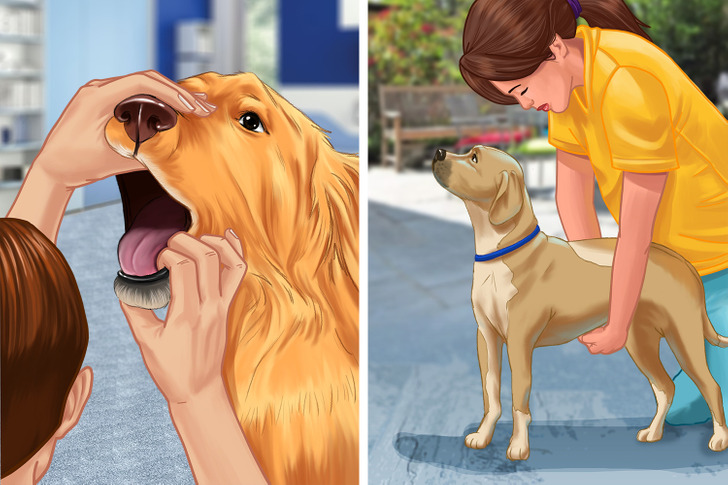
Before applying any techniques to help your pet, make sure you do it with caution because a pet that is choking could bite in panic. Now, here is how you can help:
- Open its mouth and try to see if there is a foreign object. If you do see one, try to gently remove it with tweezers or pliers but make sure not to push it further down. However, don’t spend too much time trying to remove it, especially if it’s not easy to reach, and get to the vet right away.
- If you are not successful in removing the foreign object, place your hands on the pet’s rib cage (both sides) and apply quick and firm pressure. Or lay him down on its side and strike the rib cage firmly with your palm 3 to 4 times. The point here is to try to push some air out of their lungs and push the object. Keep doing so until you get the stuck object out or until you reach the vet’s office.
- If your pet can still not breathe, don’t panic and get it to the vet immediately.
3. How to react if your pet was exposed to toxins
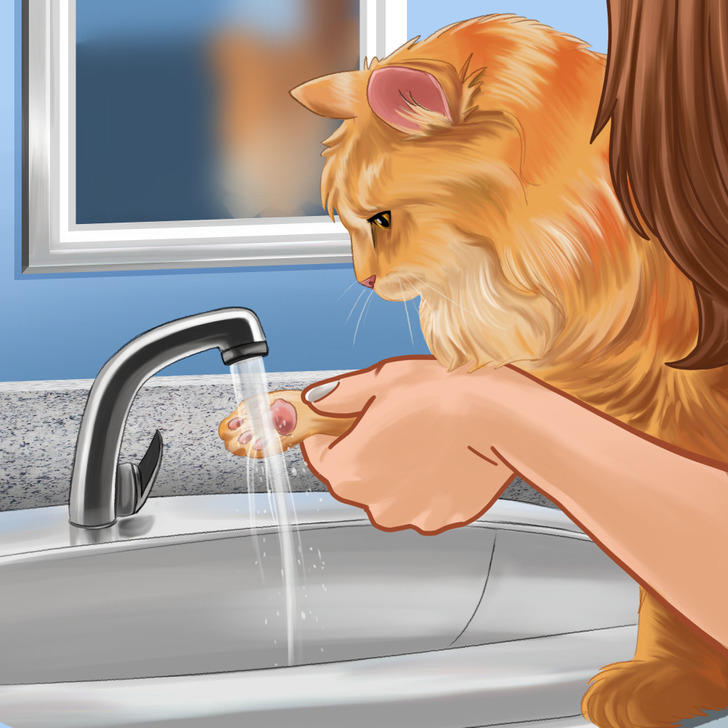
Most products that can be harmful to us humans can also be bad for our pets, like cleaning products, antifreeze, rodent poisons, and even some human foods. That’s why it’s important to put those chemicals away from your furry friend.
However, if it does happen and your pet’s eyes or skin gets exposed to a toxin, check the label of that product and follow the instructions that are placed for people. For instance, if it says that after exposure you need to wash your hands with water and soap, do that to your pet’s skin as well (but not to its nose, mouth, or eyes). If it does tell you to clean the eyes and skin with water, do so as soon and as safely as possible, then call its vet right away.
❗️If your pet eats something harmful and is presenting seizures, a loss of consciousness, or heavy breathing, call the vet’s emergency line immediately.
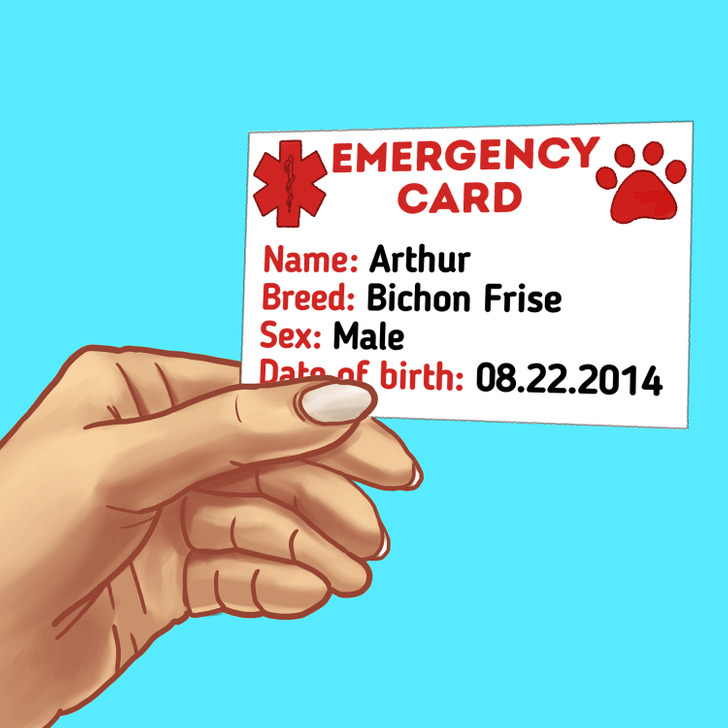
If the situation allows for it, you should have this information at hand:
- The sex, age, breed, and species of the pet and how many animals were involved
- The name and/or description of the product and how much and how long your pet was exposed to it, along with the packaging for reference
- If your pet vomited or chewed something, collect it in a sealable plastic bag to show it to the vet.
4. What to do if your pet is having a seizure
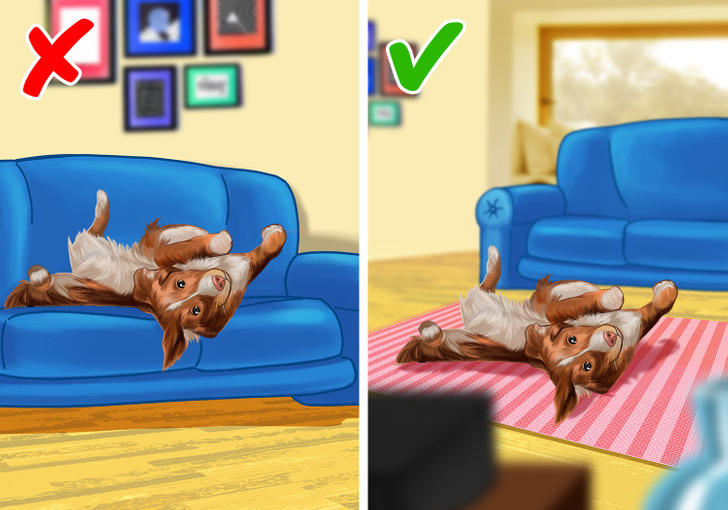
There are just a few simple things you should do while in this emergency situation:
- Make sure your pet is away from any objects that could hurt it, even furniture, and don’t restrain it.
- Check the clock and time the seizure. Usually, they last about 2 to 3 minutes.
- After they stop, keep your pet as quiet and warm as possible and call your vet.
❗️If your pet has a seizure for the first time, you should check with the vet because it could be a sign of a more concerning condition.
5. What to do in case of fractures
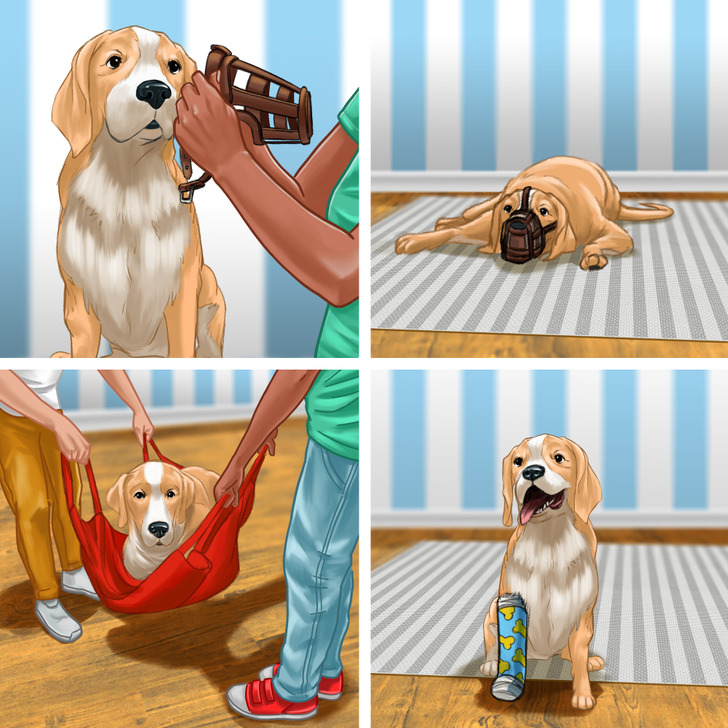
If your pet has a fracture, here is what you can do to help it:
- Your pet will be in pain and will react unexpectedly and maybe even reach out to bite you, so put a muzzle on them to avoid this.
- For support, gently lay it on a flat surface.
- Use a stretcher when you transport your pet to the vet. You can use any firm surface like a board, sling, or blanket. However, make sure you are not putting too much pressure on the injured place or the chest.
⚠️ Don’t try to mend the fracture at home because you can do more harm than good and it can actually cause more damage, so it’s always better to take it to the vet.
6. Check the color of your dog or cat’s gums.
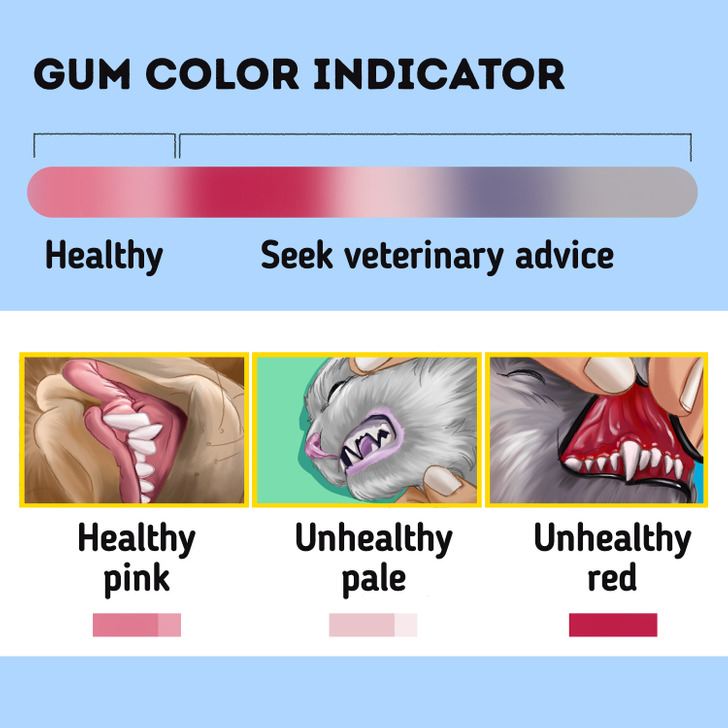
Your pet’s gum color can tell you a lot about how healthy they are. However, depending on the cat and dog, the color can vary, but usually, healthy gums should be a pink or pale pink color. It means that the pet has healthy gums and good blood flow. Here is how to check the gums of your pet:
- Lift the pet’s lip gently and check the color. Any other color aside from pink or pale pink could signify a problem (like yellow, red, blue/purple, grayish-white, white, or yellow). Remember that pink and pale pink mean healthy gums and good blood flow.
- Check the refill time. Again, lift your pet’s lip gently. Using your index finger, press into the gum gently for a couple of seconds and then release. If the healthy pink color returns in 1 to 2 seconds, then it’s okay, but if it takes longer for a color to return, contact your vet immediately.